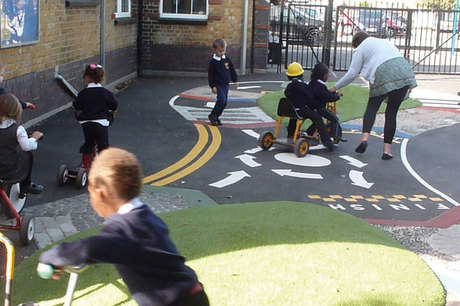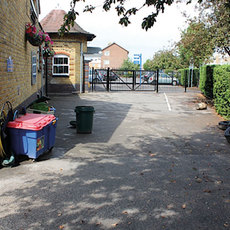
The new academic year always brings with it new resolutions. If one of yours is to ‘finally do something’ with an unloved corner of the garden or a new space that you’ve acquired, there are five things you need to do to ensure your children will really benefit. These tasks may not seem like the most exciting way to start a new project, but this thorough groundwork will ensure not a single pound or hour spent will be wasted.
1. ASK THE RIGHT QUESTION
Think about what you want children to be able to do out there. Explore what children want to be able to do outdoors, rather than what they would like to have. The latter will prompt suggestions such as swimming pool, rollercoaster or zoo; the former will encourage deeper thinking about activities, socialisation and space. Young children may not be able to articulate precisely what they want or need outdoors, so observation and careful, open-ended questioning are key to establishing what the new space could do for them.
2. IDENTIFY THE GAPS
When reflecting on practice outdoors, are there areas of provision that you feel you could or should be doing better? Carry out observations over several days, at different times and in varying weather conditions, seeking evidence of how each area of learning (or perhaps your setting’s development priority) is being delivered in the garden. What could the new, improved space offer children? Could it take pressure off other areas outdoors? Could other activities or features be relocated there to allow more room for play elsewhere? Perhaps a lack of generous, accessible storage is preventing children from making the most of the outdoors?

3. CREATE MOOD BOARDS
Once you have a sense of what you want to achieve, and have identified where the gaps in your outdoor provision are, it’s time to start collecting ideas and inspiration.
Mood boards are an excellent way of communicating your intentions to parents, colleagues and potential funders – they also offer children a way of expressing opinions and sharing ideas. The boards might be themed – for example, ‘materials we’d like to use outdoors’ or ‘storage ideas’, or they may simply illustrate spaces and ideas that you admire.
Use Pinterest to search for ideas and to collect your own. The more specific your query (for example, ‘early years sandpit’), the more relevant the images that pop up will be. Save your favourite ideas onto your own Pinterest boards.
Floor books enable groups of children to examine ideas together, moving pictures and objects around and expressing their preferences. Print out photographs of spaces, features and ideas that you like and invite the children to comment on or mark up the images that appeal to them.
Collage posters (or a noticeboard) are a great way of mixing up suggestions. Add images of surfaces, textures and colours, and encourage colleagues and parents to annotate them.
4. WRITE A DESIGN BRIEF 
At its simplest, a design brief is a short statement setting out your aspirations for the new space (that is, what you want to be able to do in it), followed by a bulleted list of the changes you will have to make in order to achieve them.
Look again at your mood boards – what did other settings do to achieve the kind of space you are hoping for? Remember to include a bullet point about how long it might take to achieve the aspiration, and one recommending a budget for the project.
5. SHARE
One of the benefits of taking this step-by-step approach to changing your outdoor space is having evidence of a thorough programme of evaluating, thinking and consulting to share with potential supporters and funders.
Applications to local charities or businesses and appeals to parents are far more likely to succeed if donors are able to see your setting’s needs for themselves, and can understand how their support will impact directly on the children.
Share your design brief, posters and mood boards; invite potential sponsors into the setting to see the new space for themselves and to listen to staff and children explaining what an impact the proposed changes will have; and invite local press to visit the setting to talk to the children about what they love about playing outdoors.
RISKS…AND BENEFITS
This ‘slow and steady’ approach to creating an outdoor play space from a blank canvas will take time, and that can be frustrating for adults and children alike. Take care not to raise expectations, particularly in children (they really aren’t going to get that rollercoaster, are they?) – and be realistic about your budget.
The benefit of this is that you can have confidence in your decision-making (and, thus, spending), since it is based on sound research and reasoning – and the finished space is much more likely to work for you and your children.









